Today I would like to present one of the most extensive murals I have come across in Mexico City. Despite the #street-art tag, it is located inside a metro station, so it's not really from the street. Also, unlike most murals that appear, then get tagged over before being covered in paint, or even replaced by a new mural, this one seems to be eternal in a way.
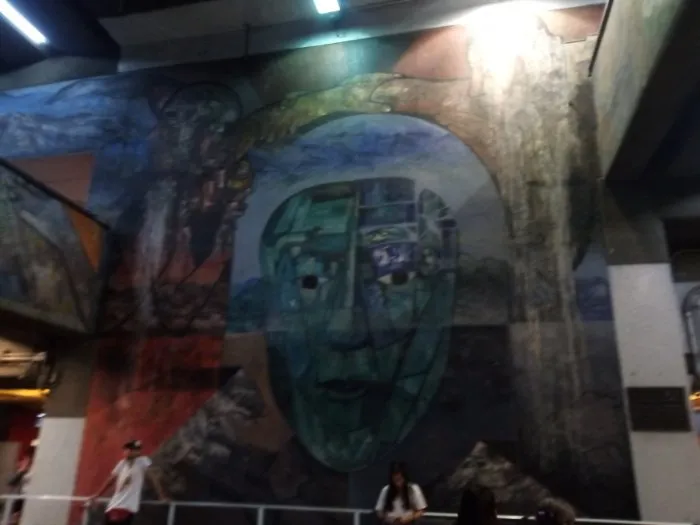
Thirty-two Years And Counting
According to an info sign, the mural was painted by the internationally renown artist Guillermo Ceniceros Reyes in 1987. Since then his images have been adorning nine walls of two floors and four sets of stairs in this expansive area, where three metro lines converge.
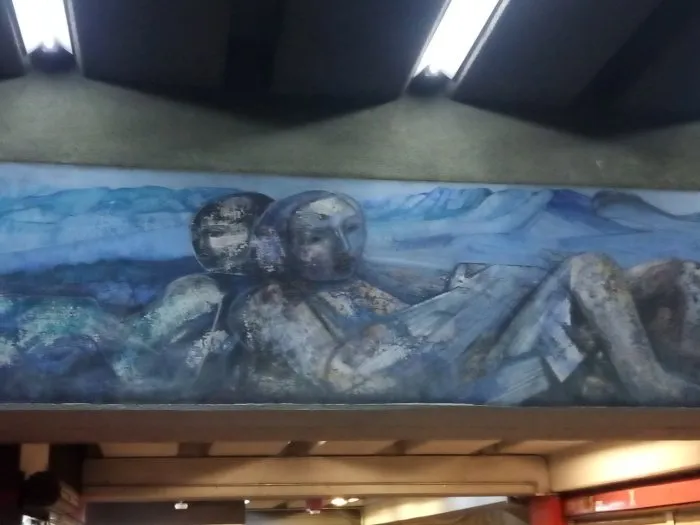
Interestingly, even though the neighborhood of Tacubaya, and the underground tunnels of its metro station in particular, are infamous for being dirty, noisy, and chaotic, none of these wall paintings have been defaced in all these years. That may due to their inaccessible location, high up and out of reach of the average mortal. Another reason might be the pre-hispanic nature of the images, which enjoy a relatively high respect.
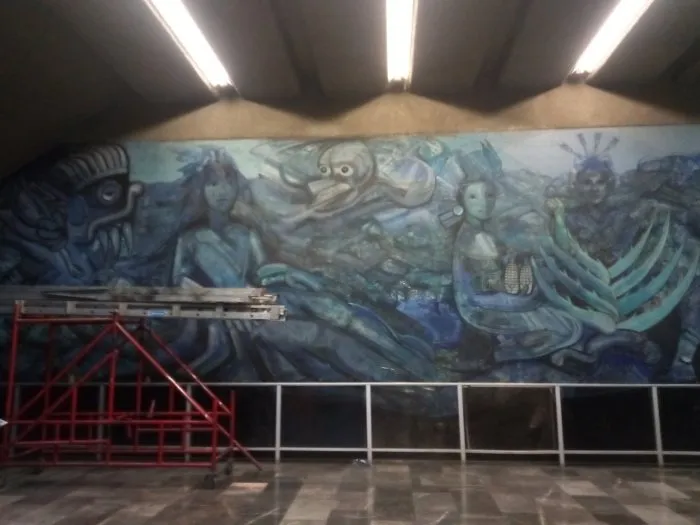
A Less Than Ideal Location
Though I had been aware of this mural for ages, it took me a while to actually get to photograph it properly, because admittedly, the walls of the metro may be one of the worst options for a mural.
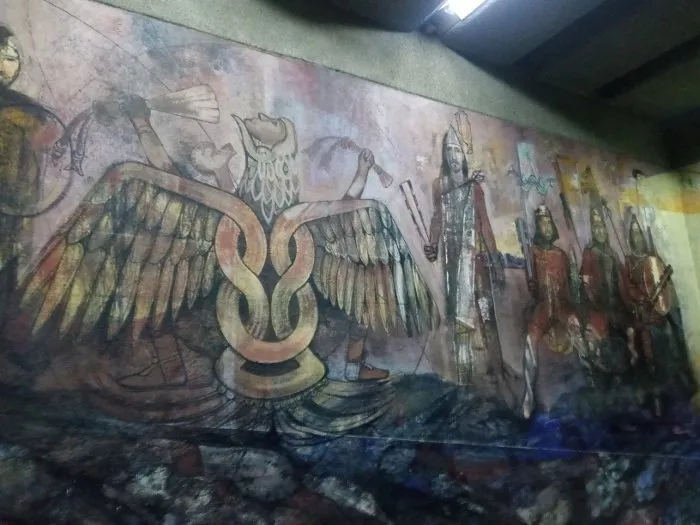
Tacubaya is a zoo. Depending on the language context, it may as well be called a circus, a casino, or a brothel, to describe its busy and chaotic nature. What comes closest in meaning, however, may be a market, as there are vendors and barkers everywhere, screaming on the the top of their lungs to sell their candy, burned CDs, or some plastic junk. To make this worse, there are periodic spurts of crowds pushing and shoving their way through the tunnels.
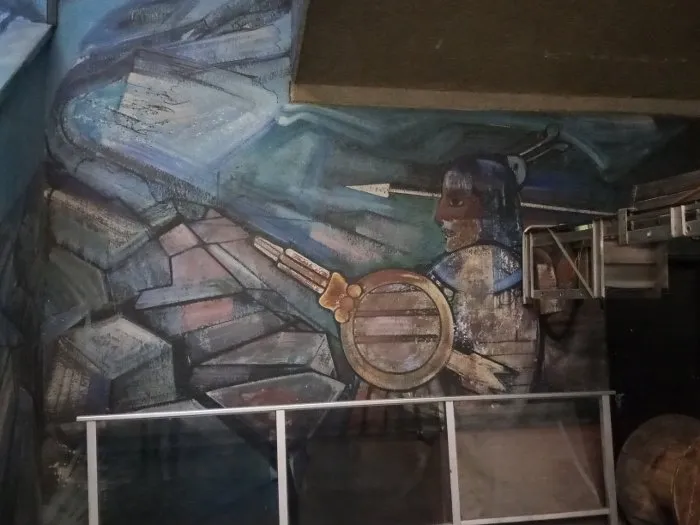
Needless to say, the perpetual darkness, the less than adequate lighting, and the constant distractions make it a real challenge to even look at this mural, let alone take good photos of it.
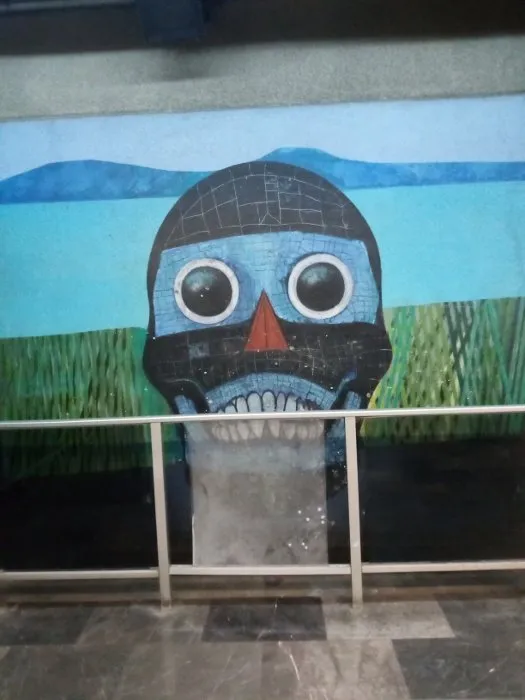
Like in a Dream
The imagery curiously looks a lot like a mosaic, though it has been painted on the concrete walls. Its blurriness was intentional (I assume), putting the observer in a dream-like state. The pictures wind their way around corners, while meeting on different pictures in the middle of other walls, merging into them seamlessly.
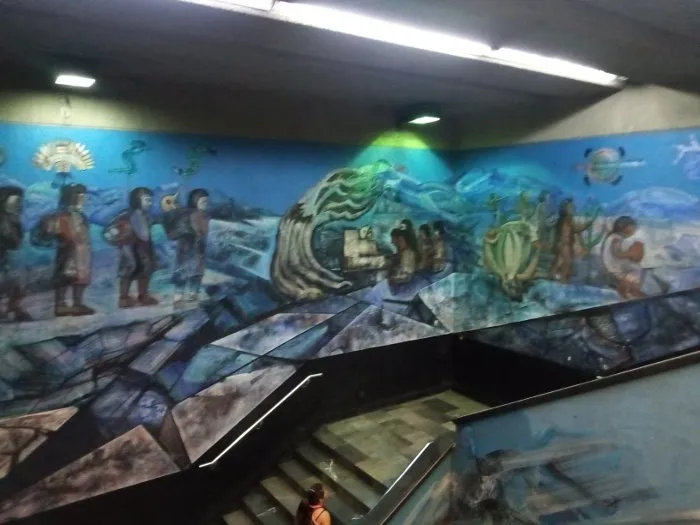
A few empty posts suggest that there may have been several signs put up, explaining each image in detail, but sadly most of them have been removed. However, for someone with a rudimentary familiarity with pre-columbian history of Mexico, and Aztec mythology, the interpretation of these pictures is not too hard.
Aztec Legends and History

The images are all pre-hispanic, telling the ancient legend of how the Aztecs migrated into the Valley of Mexico from Aztlán, their legendary homeland in the North. At that time this whole area, pretty much the extent of the urban zone of today, was one vast and shallow lake.
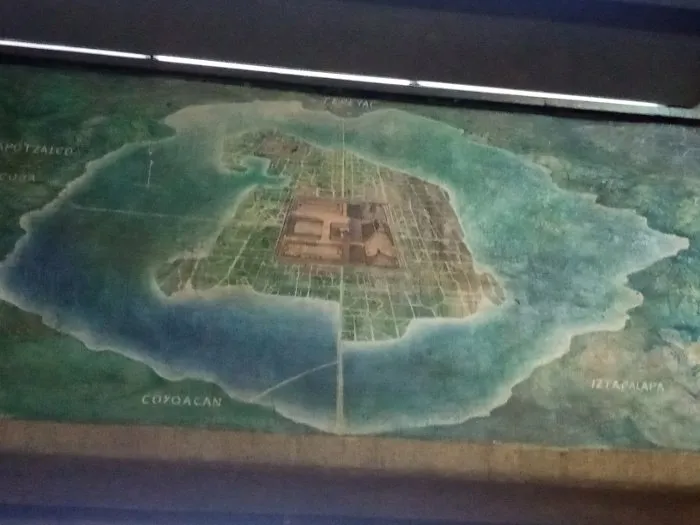
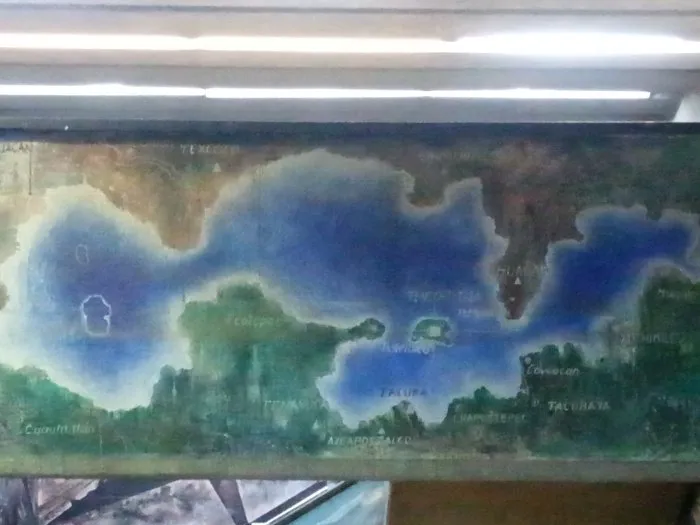
All around its shores it was already populated by other Nahua speaking peoples, so the only place to settle was a tiny island in the center of the lake, right around where today's Zócalo or center square is located. On that island they spotted an eagle land on a nopal cactus, holding a snake in its tallons, which according to an ancient prophecy was supposed to be a sign for the place where they would settle.
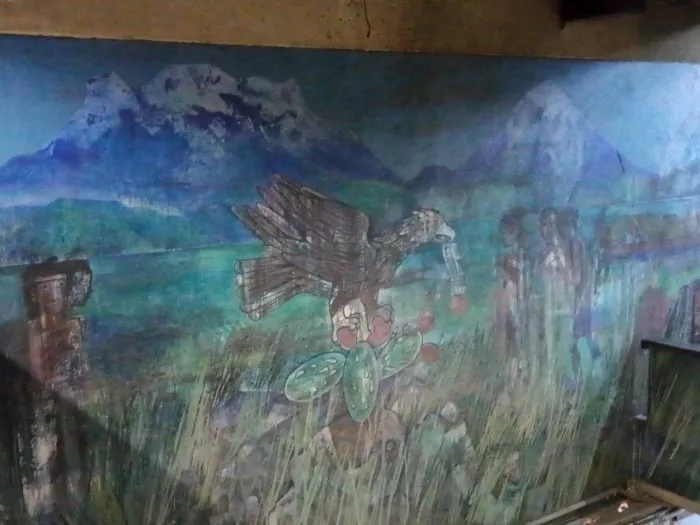
A few generations later that small island had become the city of Tenochtitlán, capital of the Aztec empire, the most powerful state on the continent until the arrival of the Spanish conquerors. Thus the artist pays equally a great deal of attention to the warrior society that the culture was marked by, the pyramids on the horizon, as well as the numerous deities, representing the sun, the moon, and other concepts.
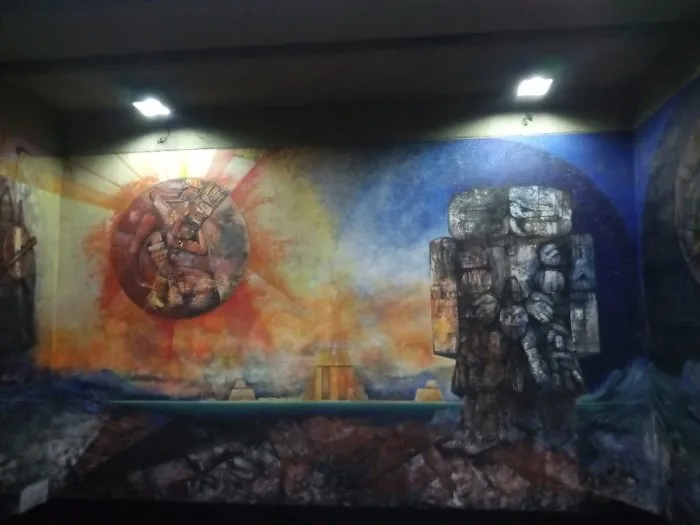
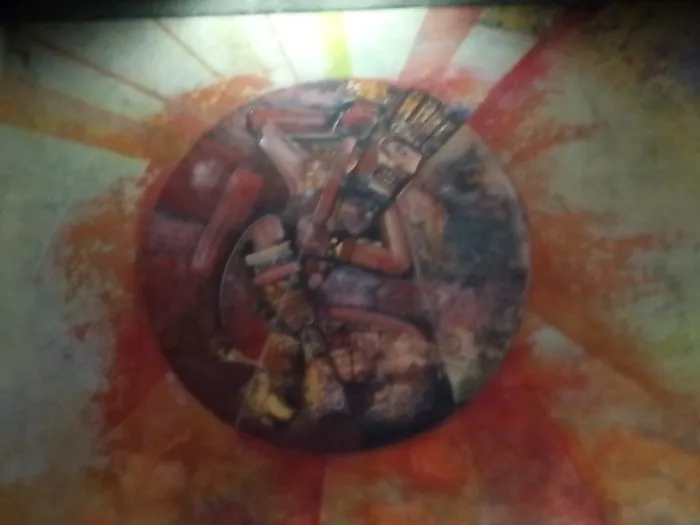
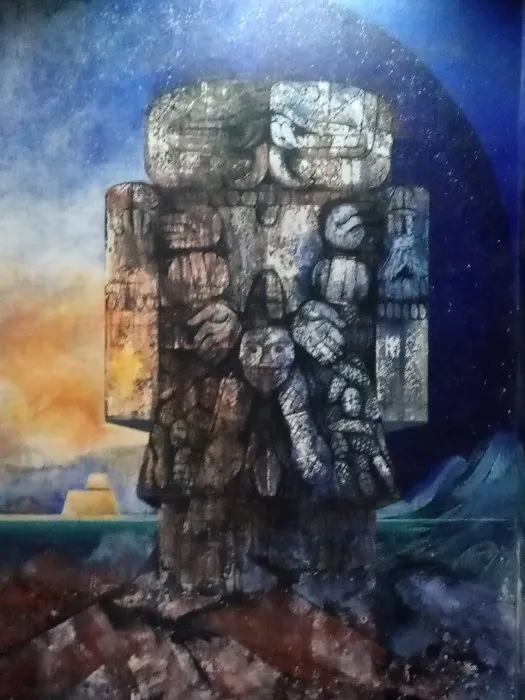
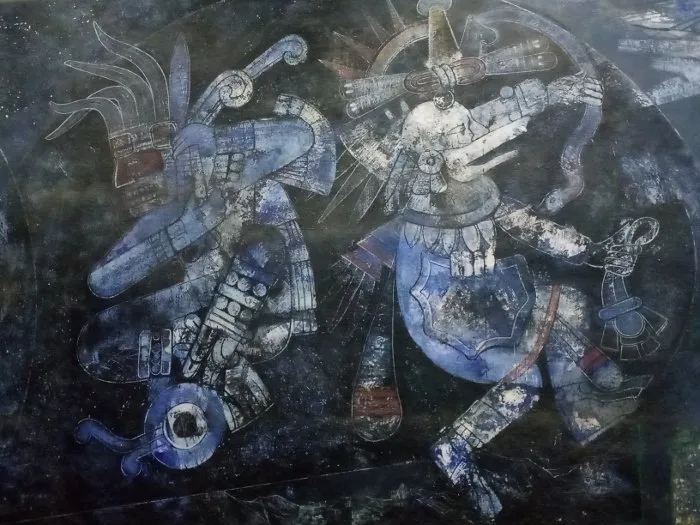

Location, Location
To see the mural, you must enter the metro system. It is located near the outgoing platform of the brown line (number 9), where you can transfer to the other two lines. The best times to view it may be on a Sunday, preferably early in the morning or late in the evening, as those are the times when the least amount of people can be expected in those tunnels.

If you liked this, check out my developing series on Mexican murals:
- Tlaloc in His Element
- Illuminated Illumination
- The Rapidly Changing Wall of La Casa Picnic
- Axolotls Wherever You Look!
- Axolotl in the Parque Lira
- A Healing Mermaid Under Mexican Skies
- Skate On Forever
- Four Sides of a Water Box
- The Children of the Feathered Serpent
- Painted Garage Doors
- New Stairs-Art in my Neighborhood
- Dream of a Sunday Afternoon in the Alameda Central
- La Familia Burrón in the Center
- Playing With Bugs on the Rooftop
- A Journey Through Rock and Roll
- Elite Warriors in the Parque México
- Laboratory Work on the Cocoa
- High Above the City
- Feminist Mural on a Blue-Collar Business
- Not Much New in Almost a Year
- Commercial Murals for Small Businesses
- A Mural for a Movie
- Get to Know Your Local Cacti
- New Images Covering Old Ones
- A Warrior Princess in Mazunte
- A Cartoon with a Public Health Message
- Murals Under Periferico
- Murals of the Barrio in Aguascalientes
- Respected and Less Respected Paintings
- Under Metro Line 4
- ChaliaKiller's – Murals, Chilaquiles, and Lots More
- A Familiar Face
- Political Expression: the Painting is on the Wall
- Different Types of Wall Paintings
- The Beauty of Death and the Struggle of Life
- Winston Churchill and the Bike Movement
Please check out these great communities I'm contributing to:

#ecotrain | What is EcoTrain | Discord Community

#tribesteemup |The 8 Pillars of @TribeSteemUp

#team-mexico | Discord Community


#cyclefeed | Introducing CycleFeed | Discord Community
